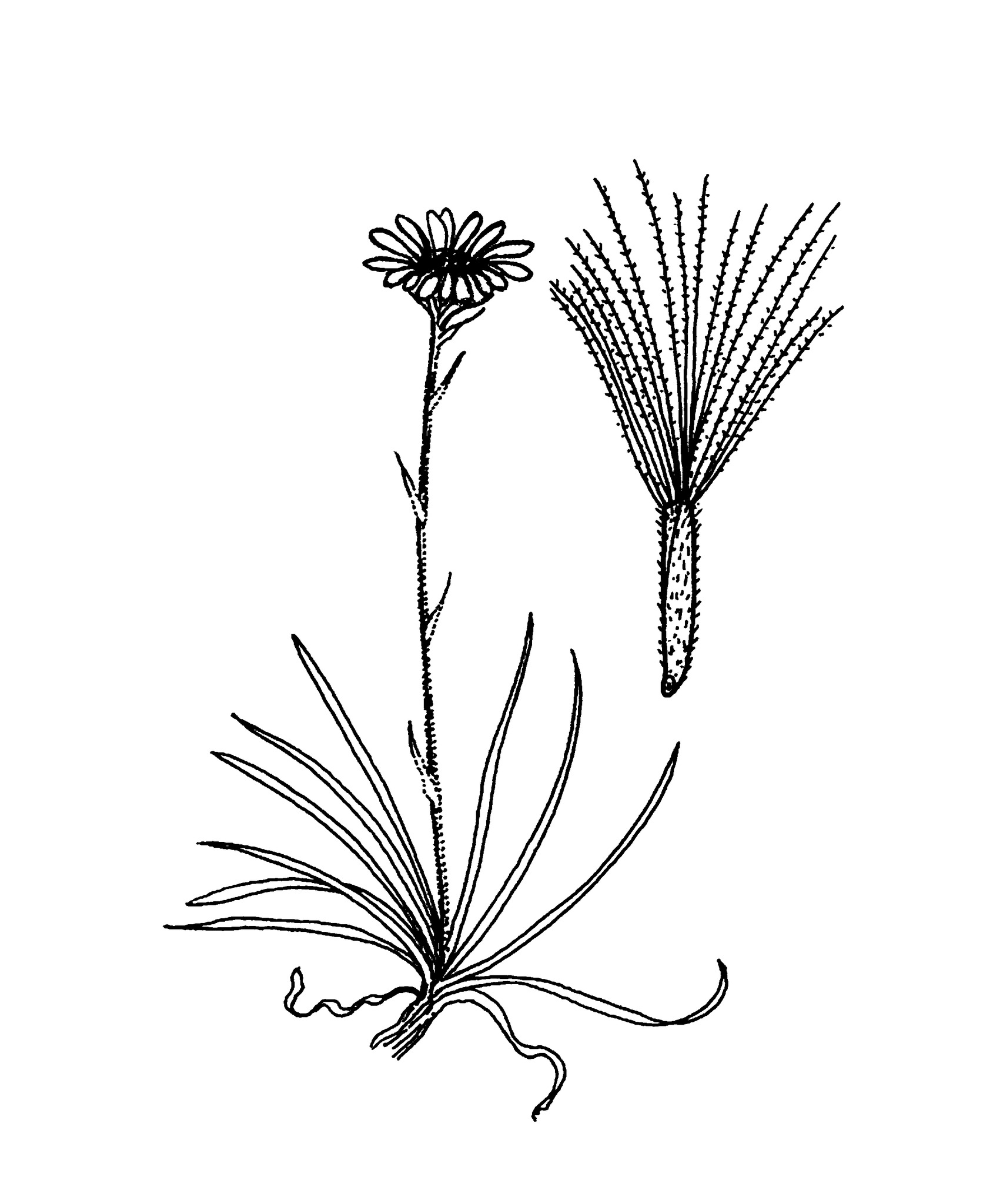
In Greek mythology Celmisios was the son of the nymph Alciope.
Perennial herbs or subshrubs, rhizomatous or tufted, densely hairy. Stems prostrate to erect, scape-like, woody at base. Leaves in basal and sometimes terminal rosettes, often also along stems, alternate, dense, sheathing at base. Capitula radiate, solitary, terminal, on long bracteate stalks. Involucral bracts in several rows, overlapping, unequal. Receptacle pitted, flat or convex. Ray florets female, ligulate, white or sometimes tinged with purple. Disk florets bisexual, tubular, usually yellow. Achenes slightly compressed, ribbed, hairy or glabrous. Pappus of many barbed bristles.
Celmisias are rarely cultivated, but would be suitable as rockery plants in colder climates.
The following species are occasionally grown in gardens: C. angustifolia Cockayne from New Zealand, a subshrub that has bare stems with terminal leafy rosettes, capitula to 4 cm across and achenes with long silky hairs; C. ramulosa Hook. f. from New Zealand, a small shrub with leafy stems, capitula to 2.5 cm across and sparsely hairy achenes; and C. saxifraga Comber from Tasmania, a prostrate herb with leafy stems, capitula to 3 cm across and hairy achenes.
Dense white or silvery leaves; large capitula with white ray florets.
About 60 species from New Zealand and Australia.
Source: (2002). Asteraceae. In: . Horticultural Flora of South-eastern Australia. Volume 4. Flowering plants. Dicotyledons. Part 3. The identification of garden and cultivated plants. University of New South Wales Press.
